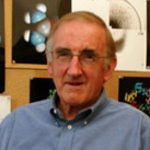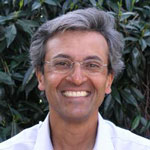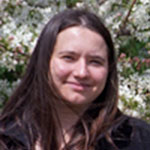See the Mini-symposium Schedule for exact speaker times.

Brian Matthews | University of Oregon | Keynote Speaker
In the past our laboratory used X-ray crystallography, in concert with other techniques, to address some of the fundamental problems in biology: How do proteins spontaneously fold into their biologically active three-dimensional configurations? What determines the stability of these folded proteins? Can stability be improved? How do proteins interact with each other? How do proteins interact with DNA? How do enzymes interact with their substrates and act as catalysts?
We have used the lysozyme from bacteriophage T4 to define the contributions that different types of interaction make to the stability of proteins. One of the key findings is that the protein is, in general, very tolerant of amino acid replacement. This has permitted more challenging experiments such as the insertion or deletion of longer segments of the polypeptide chain. Such changes can be used to address a variety of questions regarding protein folding. It has recently become possible to monitor the behavior, including folding and catalysis, of single molecules. The wealth of information already available for T4 lysozyme makes it a very attractive subject for such studies and we are actively pursuing this new area.

David Julius | UC San Francisco
We are interested in the molecular biology of sensory transduction and neurotransmitter action in the mammalian nervous system. One of our goals is to understand the molecular basis of somatosensation – the process whereby we experience touch and temperature – with an emphasis on identifying molecules that detect noxious (pain-producing) stimuli. We are also interested in understanding how somatosensation is altered in response to tissue or nerve injury.
Our approach has been to identify molecular targets for drugs or natural products that mimic the psychophysical effects of commonly encountered somatosensory stimuli, such as heat or cold. Thus, we have asked how capsaicin, the main pungent ingredient in “hot” chili peppers, elicits a sensation of burning pain. Using a combination of molecular genetic, electrophysiological, and histological methods, we have shown that capsaicin activates an excitatory ion channel (called TRPV1) on sensory nerve endings. Remarkably, TRPV1 is also activated by heat (>43C), and we have used transgenic methods to demonstrate that this channel contributes to the detection of noxious heat in vivo and is essential for the development of thermal hypersensitivity following tissue injury. These findings have led us to ask how TRPV1 functions as a molecular integrator of physical and chemical signals that regulate sensory neuron excitability under normal and pathophysiological conditions.
Host: Mike Spinner

Babis Kalodimos | University of Minnesota
The main research interests of the Kalodimos lab are focused on the elucidation of the molecular and mechanistic basis of a wide range of important biological phenomena. The ultimate goal is to understand, at the atomic level, the fundamental mechanisms underlying these biological processes. They use modern NMR spectroscopy methodologies complemented by many other biochemical and biophysical techniques to characterize the structural, dynamic and thermodynamic properties of biological systems and their interactions.
Host: Ryan Holly

Partho Ghosh | UC San Diego
Research in the Ghosh laboratory is dedicated to understanding the basis of infectious disease at molecular and cellular levels. They focus on mechanisms by which virulence factors produced by pathogenic microbes interact with host cell targets and thereby modulate host cell behavior during infection. We study these interactions in structural detail (i.e., at the level of atomic resolution through X-ray crystallography) in order to carry out precise biochemical, genetic, and cell biological experiments aimed at elucidating the mechanism of action of bacterial virulence factors in their cellular context.
Host: Maria Banuelos

Melanie Ohi | Vanderbilt University
The laboratory of Dr. Melanie Ohi is interested in understanding how large molecular machines are structurally organized and how this organization translates into function within the cell. We use single particle cryo-electron microscopy, as well as a combination of biological and biochemical techniques to pursue this goal.
Host: Andrew Wagner

Aaron Hoskins | University of Wisconsin
Our lab studies how macromolecular machines are assembled and function. We are primarily focused on the components of the yeast spliceosome and how spliceosomes are built. In addition, we collaborate with a number of laboratories on campus and elsewhere that are interested in RNA biochemistry and/or macromolecular machines. We use a combination of single molecule fluorescence, chemical, and biological tools to investigate many biological processes.
Host: Emily Reister

Antonina Roll-Mecak | National Institutes of Health
We aim to uncover how the chemical complexity of tubulin is generated by microtubule modification enzymes and how it modulates the dynamics and mechanical properties of microtubules and constitutes a code that is interpreted by microtubule based motors and associated proteins, i.e. a “tubulin code”, perhaps analogous to the histone code. Although the abundance and complexity of tubulin posttranslational modifications have long been recognized, their biochemical and cellular mechanism has largely remained elusive and recently emerged as an exciting new direction in microtubule biology.
Host: Brett Israels
